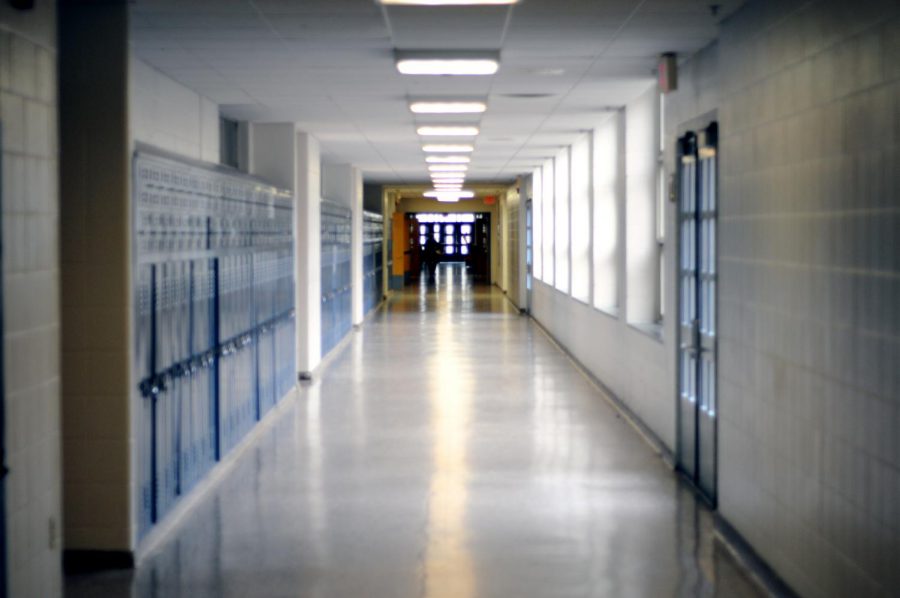Fixing America’s Public Education: A Complex Solution
SOPHIA LOUISE VIA FLICKR
Albeit with good intent, curriculum standardization and administrative bloat have jeopardized the success of students in the public education system.
April 30, 2019
As I drive past my old middle school in Milford Square, Pa., I see the now-vacant edifice of what was once a full, bustling and sprawling home of eager and excited students. Today, all that remains is a deserted school with an overgrown lawn, some creeping vines and several boarded-up windows.
Public schools may not all be in physical decay, but my former middle school is symbolic of a larger problem with public education in the United States. Between an ever-tightening federal grasp over local authority, alongside the ballooning of a bureaucratic administration, it seems that we’re forgetting the most fundamental part of school: children.
We bog students down with meaningless exams, remove individuality from curricula and create a system that prizes success over creativity. However, the disastrous initiatives and programs that have warped the U.S. public school system into the jungle it is today warrant a complex solution: returning instructional discretion to states and school boards and eliminating administrative waste.
We must first return institutional discretion to states and localities as by any measure, recent federal education standards have been a disaster. Take the No Child Left Behind Act of 2002 (NCLB). Under threat of losing federal funding, all 50 states either revised or adopted standards to comply with federal law and began testing most students, ostensibly to ensure that proficiency benchmarks in math and language arts were met.
By measuring test results against ambiguous benchmarks that no schools have ever met, NCLB created a false narrative of “failure” in schools across the nation. In Massachusetts — generally considered to house some of the best schools in the country — 80% of public schools faced NCLB sanctions as a result of poor test scores.
Under this false narrative of failure, schools were forced to double down and use test scores to evaluate teachers, leading the school day to become a monotonous monstrosity of test preparation.
Expanding upon the problems rained down from NCLB came the Common Core Initiatives, a federal incentive from 2010 that attempted to install a top-down approach on public education with the purpose of creating language arts and mathematics standards at the conclusion of each grade level.
These initiatives have been so destructive that they have earned the unique status of unifying criticism across the ideological spectrum, from the Tea Party to Democratic Socialists. The former dubbed these standards as “Obamacore,” while the latter have worried that the standards are simply a front for corporate interests. Among others, teachers commented that they received “little to no training” in adopting this new rushed-in wave on standards. Others lament the loss of classic literature, replaced by modern lesser-known novels and biographies. In my own “world literature” course, never once did we pick up “Anna Karenina” or “Don Quixote;” instead we opted for “Things Fall Apart” and “Night,” two depressing avant-garde stories of genocidal regimes.
Furthermore, countless examples support the claim that more funding will not necessarily lead to higher educational outcomes for students. Take Washington, D.C., for instance. Our nation’s capital plays host to some of the highest-funded and worst-performing schools in the entire country. They spent an average of nearly $27,000 per student in 2014, more than $16,000 higher than the national average, and only a third of this money goes directly to instructional purposes.
Instead, as many think tanks have noted, most of this funding goes right over students’ heads and into an ever-growing administrative bureaucracy. Between 1950 and 2009, the number of public school administrative positions soared 702% while the student population increased just 96%.
In my home state of Pennsylvania, the student population grew 5% between 1997 and 2009, yet non-teaching staff grew 36% — and that wasn’t even the most egregious example in the country. The student population in the nation’s capital actually shrunk 15% during this period, but their administrative positions ballooned a whopping 42% over that time.
“For a classroom of 25 students in the United States, there would have been an extra $12,314, on average, to spend if public schools had not disproportionately hired non-teaching personnel,” the Friedman Foundation reports. It boggles my mind that public schools don’t put every spare penny towards their students.
While my grievances of standardization and administrative growth are by no means exhaustive of the discourse of public education reform in the United States, I hope that they can serve as a type of guidepost to steer our nation in a direction that improves the quality of education for all of our children. Luckily, while these problems do require constant lobbying of state and governments for a complete fix, a lot of work can be accomplished at the local level to give schools a helping hand.
A year ago, I never would’ve thought I’d be running for my own school board, but I am doing just that today. Few, if any, of those regulating education have actually been educated in the mold of the current curriculum. For any student looking to become involved in politics, local decisions often produce the greatest impact on American lives and school boards are a great body to serve the public.











Robert S. Held • May 3, 2019 at 1:53 pm
This young man writes very well from his vantage point. Having passes recently through public school he writes knowingly of mistakes made in the educational system. Whatever happened to the three R’s? Press 1 for reading, 2 for writing and 3 for arithmetic